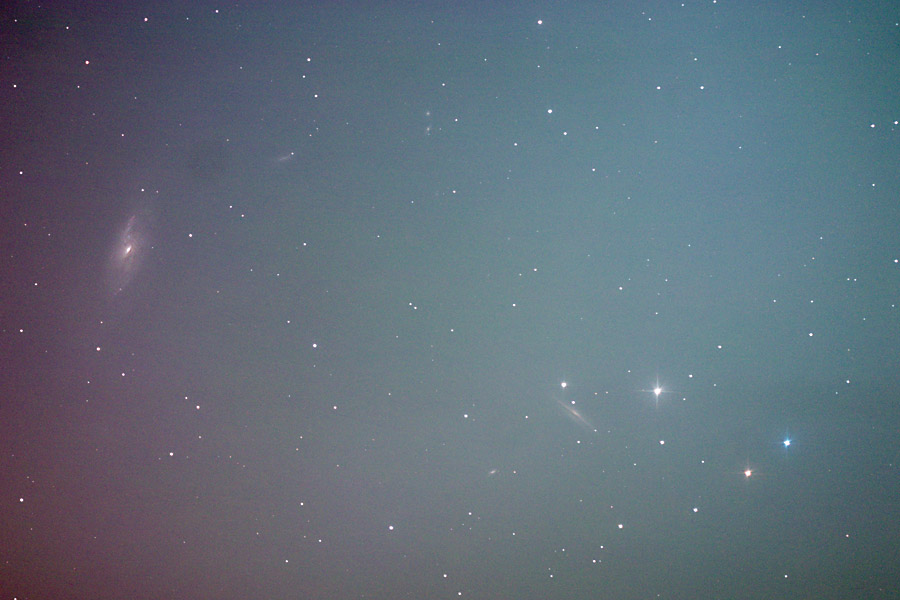I had some tuning to do tonight before I could get started. That ate most of my effective imaging time.
I decided to shoot without the Ha filter, which meant going back to the FocusMax well again. That is always a chore. Eventually, I figured out that I needed a very bright star to be very well-centered, and to set the min flux setting to a nice large value (at least 1000) so that FM has an easier chance of telling the difference between star and noise.
Getting in focus took hours. Art logged on to help, and it still took from 8:30 until nearly midnight until I was ready to choose a target for the night.
What this means, of course, is that the mirror was already well on its way to fogging by the time I got started. So of my forty-five 5m subframes of M106, I think that the first dozen or so are really worth anything. Since an hour of M106 is not what I was looking for, I decided to stack all 45 anyway. That was a mistake. The image has awful gradients, and using a flat frame just made it worse. I need to shoot flats when the mirror isn’t fogged. Ditto for lights.
Anyway, here it is:
Nearly 4 hours of exposure, but I don’t think there’s anything to be done for the gradient, seeing how it’s multicolor.
Note that there are 6 galaxies in the image. M106, its nearby faint friend, a small pair just past that, the gorgeous edge-on, and another really faint one just left of that.
While the images were shooting, I started down a path that I think will turn into something really special down the road; I discovered Elbrus, a freeware(!) plate solving package. It analyzes an image, finds the stars in it, and figures out where in the sky the image was shot. Very very cool stuff. It takes some initial calibration; it has to know exactly what the image scale is in “/px, and it needs to know or discover the image rotation. Since I was having no luck having the software figure that out on its own, I needed to calibrate it manually against an image; pick 3 stars, figure out exactly which 3 stars they are, and let the software do its thing. It turns out that my image scale is a little different that I’ve been calculating; it’s exactly 1.50, not 1.62″/px. I’ll have to figure out where the discrepancy lies.
Anyway, once I was calibrated, Elbrus solved the image immediately, and was able to re-synchronize the mount so that it knew exactly where it was pointing. I can imagine a time where I can point the mount nearly anywhere in the sky, and Elbrus will take care of synching up the mount so I can get on with my evening. Not bad.
So. Now I await the sunset. Tonight, I go hunting in Virgo. I’ve avoided the local galactic neighborhood for too long.


MOST COMMENTED
Observatory
Observatory 2.0 – Time has come today!
General / Maintenance
First Light, a deeper look
Mount / Observatory / Telescope
Observatory 2.0 – Result!
Observatory
Observatory 2.0 – The Pier goes in
Gear / General / Maintenance
Martin Farmer Wormblock installation notes
Deep Sky / Long Exposure Photography
NGC2244, The Rosette Nebula
Deep Sky / Long Exposure Photography
Another beautiful night.